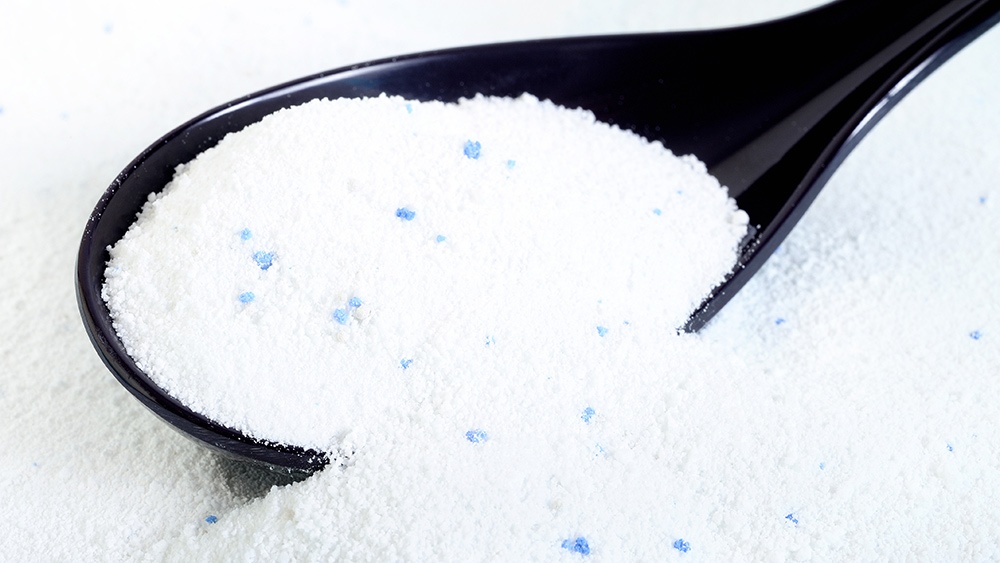 In a Whirlpool survey of 2,500 consumers, nearly 80 percent of respondents said they do an average of nine loads of laundry per week.
In a Whirlpool survey of 2,500 consumers, nearly 80 percent of respondents said they do an average of nine loads of laundry per week.
With Americans’ tendency to overdose our washing machines with laundry detergent, you’re increasing your water bill, harming the environment, and spending more at the grocery store for a product that isn’t the best for your fabrics or your family.
Here are a list of problems that come with using laundry detergent, as outlined by Warner Service of Frederick, Maryland:
Laundry detergent causes pesky stains. Sometimes, laundry detergent and/or softener doesn’t fully dissolve in the wash. Whether it’s powder, liquid, or single-pack laundry products, undispersed fabric softeners and detergents have the potential to leave a waxy-like feeling and/or large blue stains on clothes.
Without harming the fabric, soapy dishwasher detergent quickly solves this laundry problem because it has a different formulation and can easily remove pesky stains. Here’s how:
- Wet the affected areas.
- Rub with a small drop of liquid dish detergent (preferably the type designed to remove grease) using small, vigorous strokes until the stain slowly comes out.
- Repeat again with more dishwashing detergent if the stain doesn't come off with the first application, adding more detergent.
- Wash the fabric under cold water when you don’t see a stain anymore.
Tip: Don’t ever directly pour laundry products on dry clothes or throw the single-pack detergent on top of the load. Add both to the washer drum, so the product disperses in water to evenly clean dirty laundry.
Too much laundry product causes bacteria build-up in collars, pockets, and other tight areas because these areas don’t always rinse perfectly clean.
The solution is to halve the amount of laundry detergent for sensitive skin, then gradually increase it if you have a larger laundry load or dirtier clothes. However, if you have hard water, use more soap, so check the bottle’s recommendation.
Laundry detergent contains harmful chemicals. The University of Washington studied top-selling laundry products, and each contained at least one chemical that was flagged as “toxic” or “hazardous” under federal law. Those chemicals weren’t listed on the label.
For example, Sodium Lauryl Sulfate (SLS) is a "denaturant, surfactant cleansing agent, emulsifier and foamer," according to the Environmental Working Group (EWG) Cosmetics Database. It's also classified as a “moderate hazard.”
While the chemical originates from coconuts, SLS is mixed with sulfur trioxide or chlorosulfonic acid and neutralized with lye. According to a comparison study, its corrosiveness strips skin of protective oils and moisture, which causes skin and eye irritation, organ toxicity, and biochemical and cellular changes.
Another popular chemical is 1,4-Dioxane. Two-thirds of all laundry detergents contain dioxane, an unintentional byproduct of ethoxylation that’s added to produce softer detergents that produce more suds.
The Centers for Disease Control and Prevention claims that dioxane causes “cancer and has been found to be potentially toxic to your brain and central nervous system, kidneys, liver, and respiratory system.”
According to a study by the Green Patriot Working Group and Organic Consumers Association, “Levels of contamination were so high that many companies have come under legal attack for poisoning consumers.”
In addition to these chemicals, many detergents contain Nonylphenol Ethoxylate, which causes kidney and liver damage, hormonal problems, disrupted growth and metabolism, cancer, and increased mortality in rainbow trout.
Phosphates, a common chemical in detergent, causes nausea, diarrhea, and skin irritation. Today, phosphates are banned in more than 25 states including Maryland, and P&G, provider of Tide, is phosphate-free.
If you’re looking to get rid of laundry detergent altogether, consider the Laundry Scrubber®. The cold-water system uses only activated oxygen and ActivePure® technology to pull out dirt and grime from clothing fibers, preventing the growth of odor-causing bacteria and chemical build-up.
For more information,including price and a how-it-works video, click on the button below:


